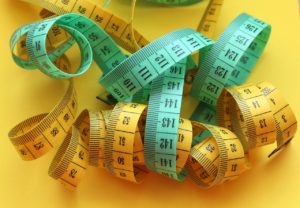I’m going to be doing a series on progression in training. Why? Because this is the most important aspect, the principle, that you must understand in order to get results. And, sadly, most people do NOT really understand progression.
I haven’t talked about progression all that much since writing The Master Keys to Strength and Fitness. It’s about time I do again.
That’s because strength training is all about progression.
Do more (in some way, to be covered shortly) than you did last time and you’ve made progress.

To start with here are the different ways that “more” can be measured. We start with the three main ways:
- Intensity
- Volume
- Density
And two more which should also be noted:
- Quality
- Rate of Perceived Exertion (RPE)
Now, let’s dive in to understand what these mean.
Intensity
This is the amount of weight on the bar. It’s a scientific term used in weightlifting where 100% intensity would be a max. 90% is close to it, where you can usually handle a few reps. 70% you can usually do for 10 to 20 reps or more. It’s not to be confused with people saying “Oh that was intense!” which means hard or difficult to do. For that, I use the term severity, and more on that in a bit.
If you’re not using weights, like with bodyweight exercise, intensity still is used to be to discuss how hard something is. A handstand pushup is more difficult than a decline pushup is more difficult than a regular pushup is more difficult than a knee pushup. More intensity at the higher levels.
Volume
This is sets and reps. The total you do of each. Later on, we’ll talk about “the supremacy of the set.” For now, know that if you do more total reps or total sets of the same reps as last time, you’ve done more and that is progress. If we’re looking at holds, this would be total time involved.
Density
This looks at volume but then puts a time constraint on it. How much volume in how much time. With density you don’t just need to do more volume, but the same amount of volume in less time. Or more volume in an equal amount of time.
Quality
This is how well you do the move. While more subjective than the others, it is an important factor to look at. Doing a new high intensity is good, and maybe you’re not ready for the next jump in weight. But you can clean it up. It can be the same intensity, same volume, just done better. This often becomes more important in exercises that have a skill basis such as handstands, levers, dragon pistols, etc.
RPE
This is how hard you have to work to do something. Have you really progressed if you simply push yourself harder? In one way you have, but in another you may not. Cause we want the body doing more, without having to try harder to do so. This can be useful in that if you do the same thing, but it is easier to do, you’ve made progress. Especially useful if you have a “yardstick conditioning workout.”
There are more progressive possibilities than just these.
Speed comes into play with certain things. Order can also be a factor. Range of motion (though this can be lumped into intensity depending on how it’s used.)
Now, each of these has its best case uses. For instance, focusing on density tends to work really well for muscle building. Quality, as mentioned, can be great in skill based work.


